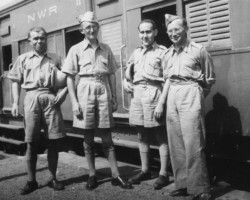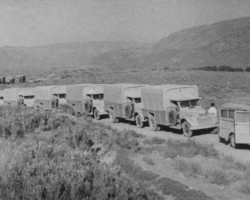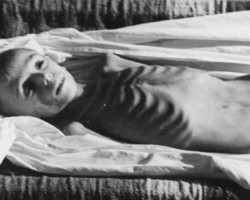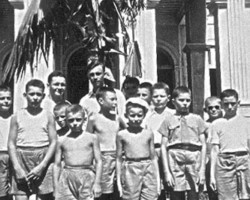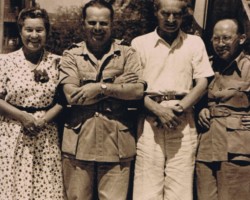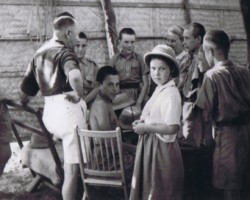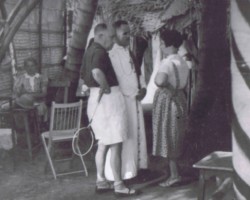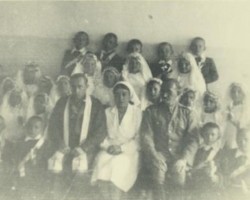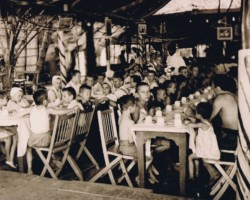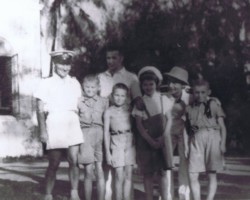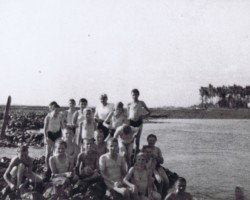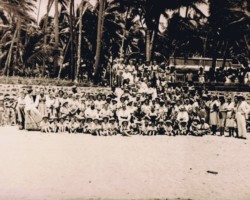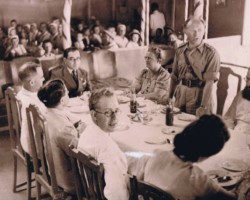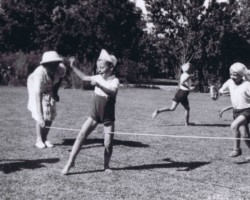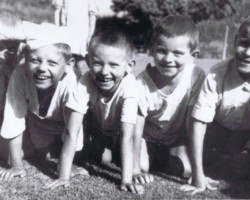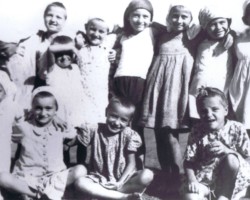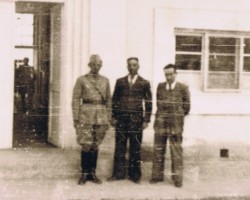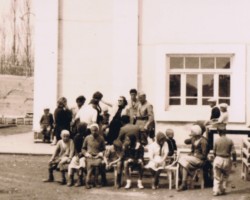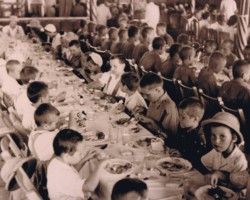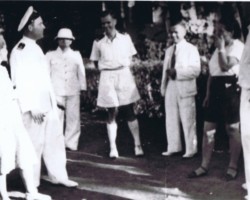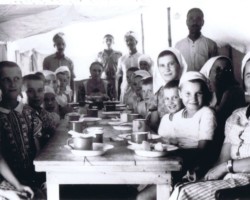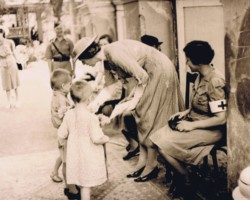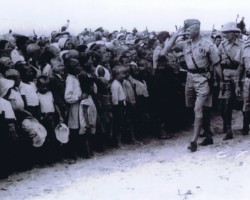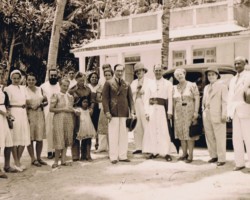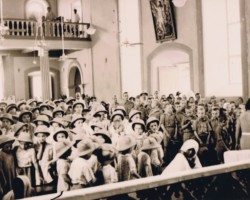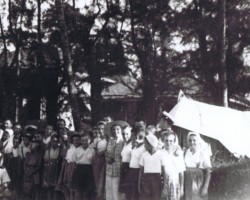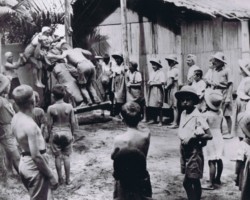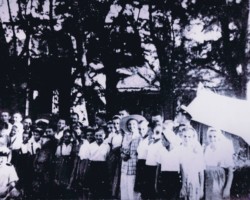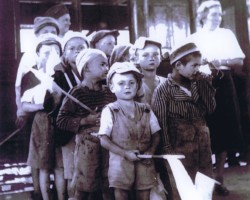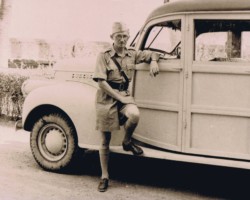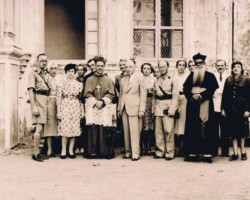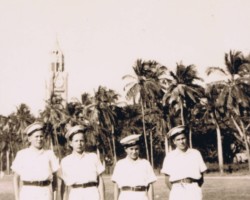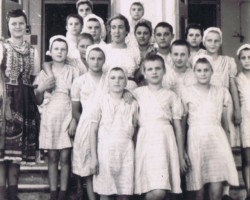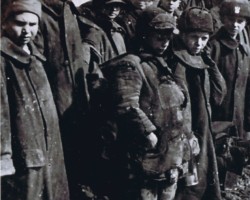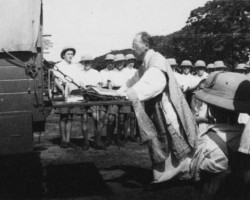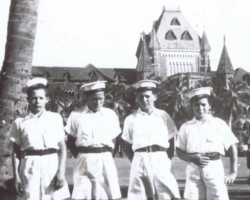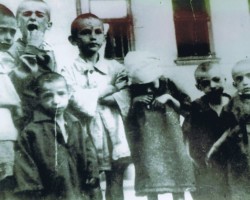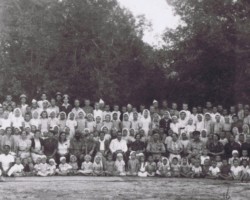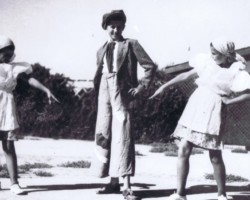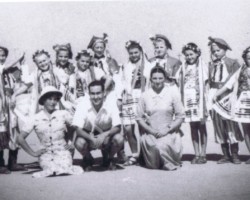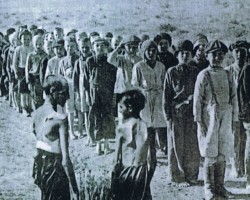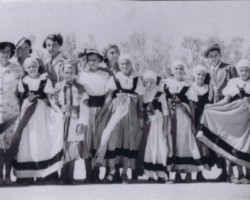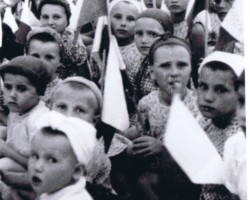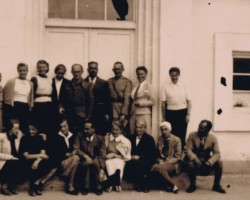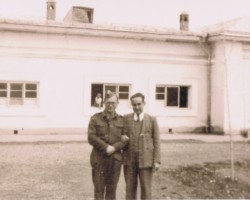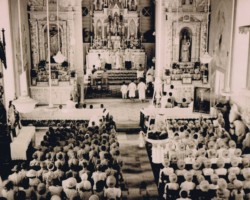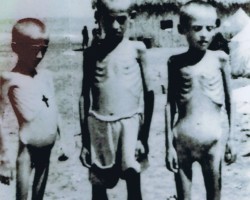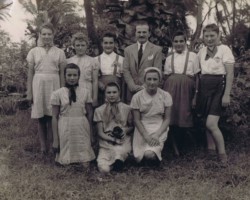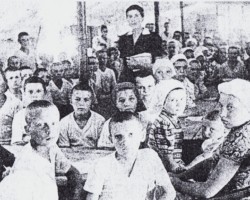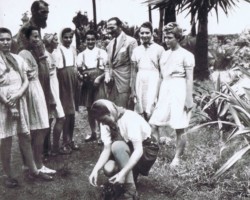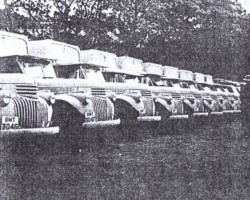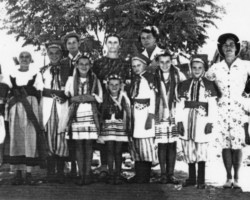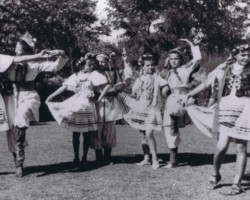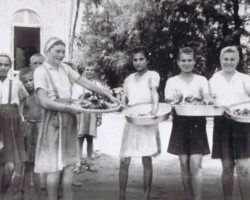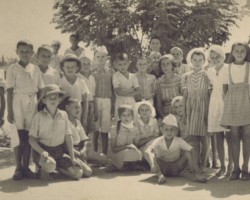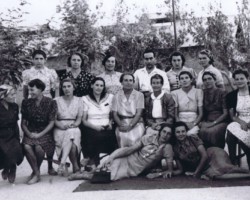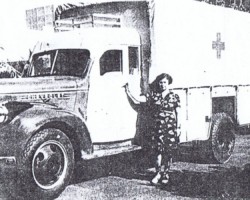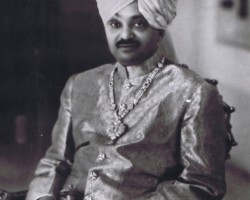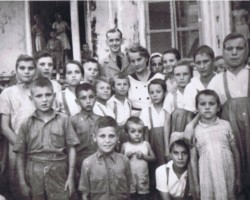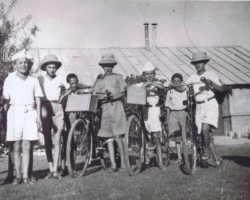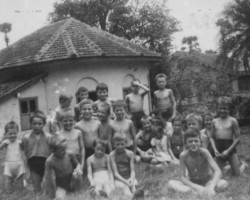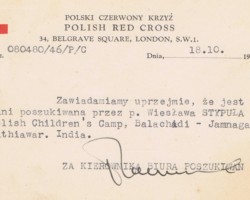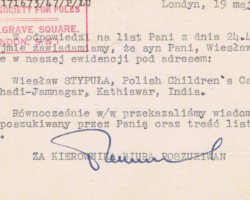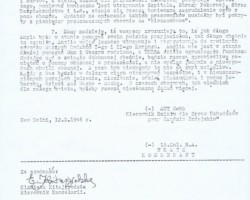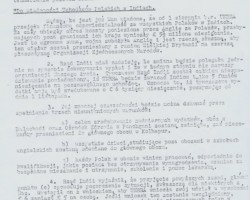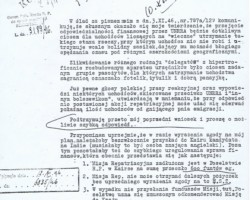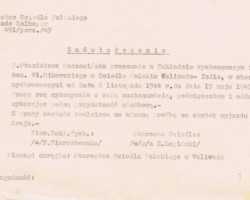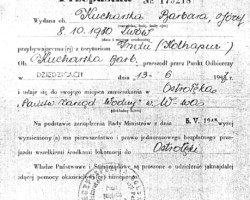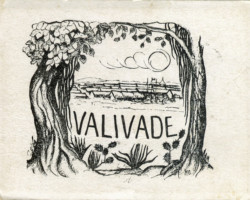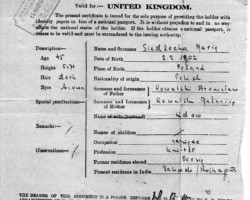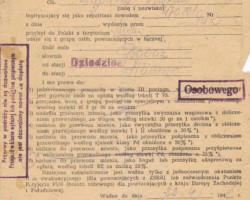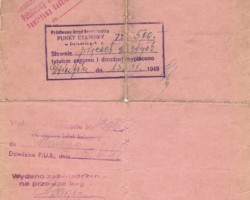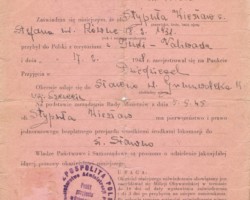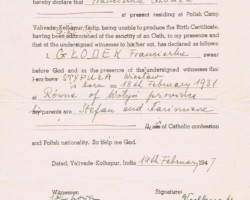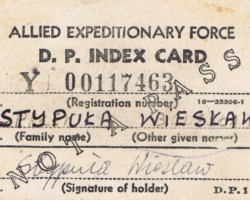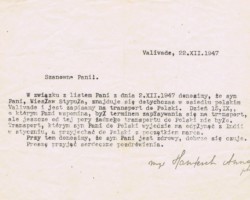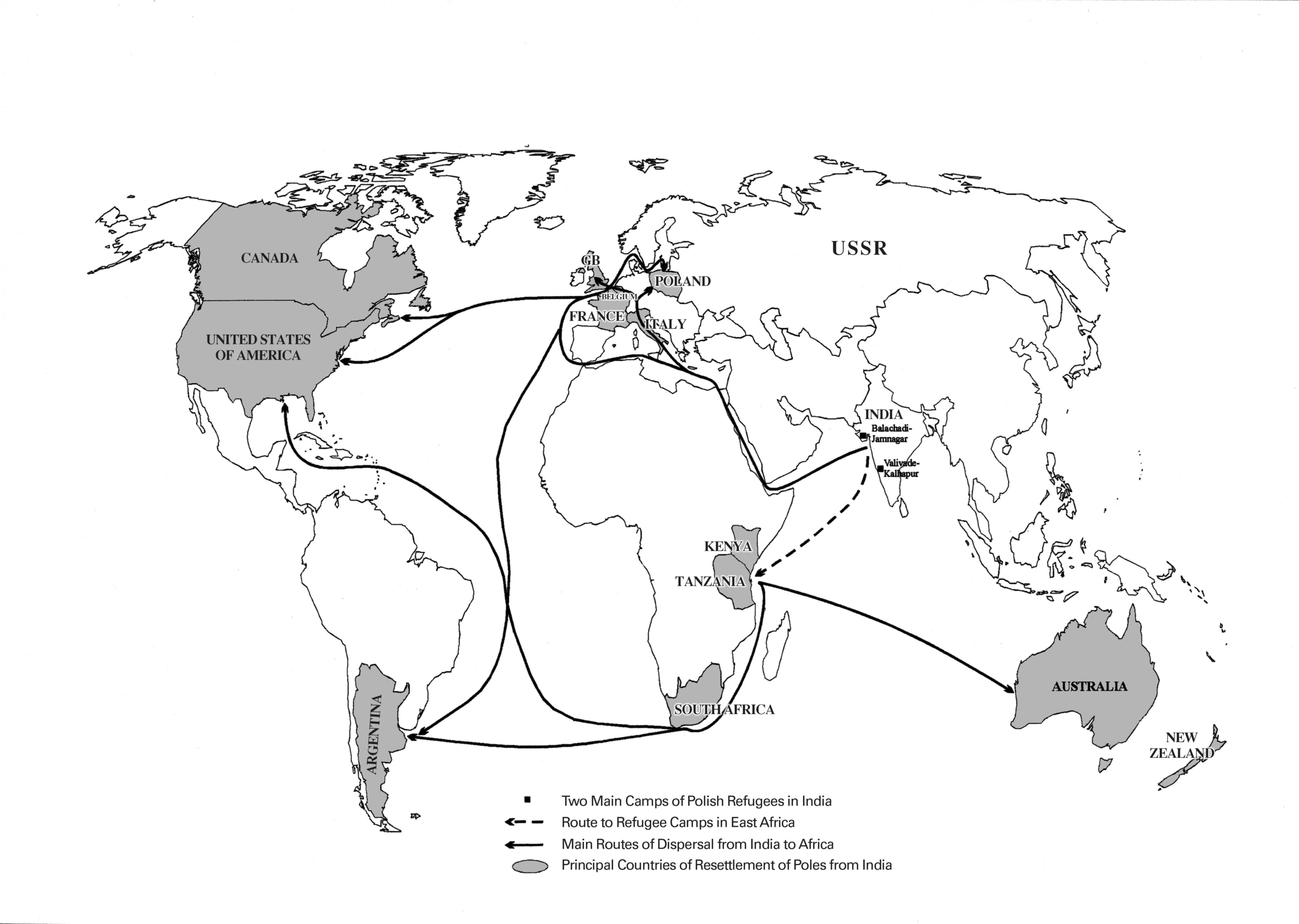Quick Links
Evacuation of Polish refugees from the USSR to India
In the spring of 1942, members of the Rescue Expedition of the Polish Red Cross Delegation from Bombay and delegates and trustees of the Polish Embassy in Kuybyshev spread out across the southern republics of the Soviet Union in search of orphaned or lost Polish children, sent deep into the USSR from the Eastern Borderlands in 1940–1941. They were found in various Russian, Uzbek or Kyrgyz orphanages, juvenile detention centers, or directly on the streets or local bazaars, where the lost vegetated – without parents, often deceased, imprisoned or separated from them for various reasons. The health condition of many of the youngest was tragic. Extremely exhausted, emaciated, sick, hungry, dirty, lice-infested, dressed in rags, barefoot, begging in houses or stealing in bazaars – they fought for their survival with determination.
For these children, ad hoc help was organized by creating local, small Polish orphanages. Care for them was often entrusted to random people who expressed a desire to help children. They were mostly women with their small children, or single mothers who had lost their own children in exile. After organizing appropriate transport, the children’s nannies took the youngest to the collective, large Polish orphanage in Ashgabat, Turkmenistan. In terms of logistics, these were extremely difficult tasks, because most of the children were sick and they were transported from a distance that often exceeded 1000 km.
The orphanage in Ashgabat was located in the old workers’ hotel “Kolkhoz”. Michał Tyszkiewicz was in charge of it. Medical care was in the hands of Dr. Konarski, whose task was to treat the children well enough to endure the hardships of the journey during their evacuation to India
In the initial period, one of the children’s carers was the famous Hanka Ordonówna (real name Maria Anna Tyszkiewicz, Michał’s wife), who, just before the departure of the first evacuation group (by land transport from Ashgabat to India), despite her very poor physical condition, organized her own mini-concert in the Ashgabat orphanage (later, like many other Polish refugees in India, she ended up in a sanatorium resort in Panchgani). Another important event of that time was the preparation by Janina Dobrostańska of an extremely moving vocal and recitation program performed by children from the orphanage, to which employees of the Delegation of the Polish Embassy in Kuybyshev and soldiers from the car column of the 7th Infantry Division of the Polish Armed Forces (Anders’ Army) being formed in the USSR were invited.
The first batch of the first evacuation transport of children from the orphanage in Soviet Ashgabat, after crossing the Kopet Dag mountain range, with mountains reaching heights of up to four thousand meters above sea level, reached Mashhad in Iran late in the evening of March 13, 1942. A week later, the second batch of children set off along the same route, also transported by a convoy organized by the Polish Red Cross. While both combined groups of children were undergoing a two-week quarantine there, the transport manager – the vice-consul of the Polish mission in Bombay – Tadeusz Lisiecki rented his cars to local merchants, and for the fee he collected from them, he purchased large quantities of fruit and food products for the further, very difficult route through the uninhabited, desert areas of the Iranian-Afghan border.
After a week, the entire team safely reached Quetta in northwestern India, more precisely in Baluchistan (today in Pakistan). The children were further transported by train through Lahore, Delhi to Bombay. On the route of several thousand kilometers, the Polish children were very warmly welcomed and given sweets and gifts by the local authorities and society. The children were accommodated in three rented buildings in Bandra on the outskirts of Bombay. The center in Bandra was temporary, transitional and operated for about three months, i.e. until the construction of a permanent settlement in Balachadi in the principality of Nawanagar, whose ruler was Maharaja Digvijaysinhji (he was the one who created this settlement intended for the youngest Poles experienced in exile deep into the Soviet Union).
In Bandra, the children underwent medical examinations and treatment for various ailments they had contracted during their exile. At the same time, the centre started introductory school classes and cultural and educational activities with the youth. In the latter case, Hanka Ordonówna was the leader, preparing an artistic programme for the 3rd of May holiday (the anniversary of the adoption of the constitution of 1791 was always solemnly celebrated by all Poles in India). Soon, the artist left the centre due to her deteriorating health and was sent to a tuberculosis sanatorium in Panchgani (this is also where former Polish exiles were later gathered). An interesting fact from this period is the fact that the older youth of the centre published a witty, satirical bulletin entitled Głos Werandy, whose main editor was Tadeusz Herzog. The Bandra centre was very often visited by luminaries of the Bombay elite and crews of Polish ships calling at the Bombay port (including sailors from the SS “Kościuszko” steamship), who gave the children numerous gifts on the occasion. In mid-July 1942, the Bandra centre was closed down and all the children were moved to a newly built, permanent housing estate in Balachadi.
At the time when the children from the first evacuation transport were being transferred from the temporary centre in Bandra near Bombay to the permanent settlement in Balachadi, from the orphanage in Ashgabat – on 8th July 1942 – the second transport of children to India was leaving. Due to the illness of Vice-Consul Lisiecki, Dr. Jan Konarski took over the management of this transport. Initially, the column of a dozen or so cars with children moved along a route similar to the route of the previous team. During the journey through the territory of Iran, several minor incidents of a robbery nature occurred, therefore, on several sections of the road, the transport was accompanied by local military protection. Due to the summer season and the very high temperatures occurring at that time, the journey through the desert areas of the Iranian-Afghan border was extremely difficult for the children.
After the youngest reached India, it was necessary to change the planned route. This was caused by a huge flood during which all the bridges on the Indus River were torn off. The entire column was directed to a forced stop at the high-mountain English military base in the city of Quetta. There, a temporary center for children was established for their several months of, as it turned out, safe stay and to wait out the difficult circumstances.
Very good food, excellent accommodation conditions and an extremely friendly attitude of the command of the English garrison, local authorities and medical services meant that the children quickly acclimatized to Quetta and gradually recovered after the drama of exile in the USSR.
Several caregivers for the youngest, under the direction of Maria Skórzyna, set up a makeshift school. Most of the children participated in the classes held there. At the same time, a former actress from the Bydgoszcz theatre – Janina Dobrostańska – organised a large youth and children’s dance and vocal group, which prepared a large regional performance for the local population and soldiers, which was received with great enthusiasm by the audience. This performance was a form of thanks for the warm welcome of the children in Quetta, and the children donated the income from the performance to the orphans of fallen English soldiers from the local garrison. In September, Polish children were leaving the extremely hospitable Quetta with great regret. After crossing the vast Indus backwaters by a primitive ferry boat, under the watchful eye of their guardians they transferred to a local train running along the outskirts of the Indian Thar Desert, and after several days of tiring journey (in the last stage from Rajkot station – by car) they finally reached their final destination – a settlement in Balchadi near Jamnagar.
The third, also land transport of Polish children from the USSR (from Turkmen Ashgabat via Mashad) to India was organized in December 1942. It was also the last expedition prepared by the Polish Red Cross Delegation in Bombay. All these expeditions included orphans, half-orphans or children separated from their parents in various circumstances (often without knowing their fate). However, some of the youngest Polish refugees from the USSR also reached India via Iranian Mashad later, by a roundabout route – via Tehran or Isfahan in the interior of that country, and then via the port in Khorramshahr by ship to Karachi. Others – who were not orphans or half-orphans – made the journey to the subcontinent with their parents (mainly mothers, as fathers had previously joined Anders’ army and followed the military trail in the Middle East). So they traveled along the roads by which adults reached India. The majority of civilian refugees from the USSR were mature people, including women. Polish exiles from the Soviet Union evacuated during the Polish Armed Forces’ retreat from there, first reached Iran (officially Persia until the mid-1930s), like the army.
As civilians, they arrived there mainly with Anders’ army (also formed of former deportees: forced resettlers deported from the Eastern Borderlands, prisoners and gulags), crossing the Caspian Sea on ships from the port in Soviet Krasnovodsk (today Turkmenbashi) to Pahlevi in two rounds – in March-April 1942 and August 1942. But some adult civilians, like some soldiers of Anders’ army, mainly sick, travelled from the USSR to Iran by land (the land evacuation of civilians lasted in stages from 1942 until the end of 1943, despite the renewed severance of diplomatic relations between the Soviets and the Poles in April 1943, which made matters even more difficult), as always in such cases through Mashhad, bypassing Pahlevi (today’s Bandar-e Anzali), to go from Mashhad to Tehran (their fates varied from there) or straight through Ahvaz and Khorramshahr to India, among other places. And so, a total of about 36,000 Polish civilians (adults and children) were evacuated from the USSR by sea, and over 2,000 by land (mostly children, of whom were transported in three Polish Red Cross transports to India). On Iranian territory, Poles were then placed in many refugee camps: in Tehran, Isfahan (where mainly children were sent), in Ahvaz (located in a geographical zone with a very unfavourable climate, which is repeated in many reports). They then reached India by sea – some of the ships with Polish refugees from Iran sailed not only to the subcontinent, but also to Africa or New Zealand – via the port of Khorramshahr on the Persian Gulf. (In total, only the above-mentioned expeditions of the Polish Red Cross from Bombay with children evacuated from Soviet orphanages made land crossings from the USSR to India). In the case of the journey to India, refugees were sent to the Indian port of Karachi, near which the British organised transfer camps for them on their further journey into the subcontinent (although some of the Poles, after arriving in Karachi in India, sailed further – mainly to Africa).
In this way, over time, Poles arrived at various residence centers in India (although often their journey, as the future showed, was not to end there at all; those evacuated to the subcontinent soon moved on to other places, e.g. to camps for Polish refugees in Africa or to Mexico). In India, they ended up in: two transit, temporary camps located in the immediate vicinity of Karachi – Country Club and Malir; the only permanent (apart from Balachadi, intended for children) and at the same time the largest Polish refugee settlement in Valivade near the city of Kolhapur; a health resort in Panchgani or convents intended for young people – in Karachi, Mount Abu, Panchgani and Bombay. However, many Poles moved between the above-mentioned places. locations, for example, the youth growing up in Balachadi ended up in Valivade, where all the refugees living in the Balachadi settlement were later moved when it was liquidated (Valivade operated the longest of all – until 1948). The wanderings of the former exiles deep into the USSR were not to end in India, however. Their odyssey continued…
